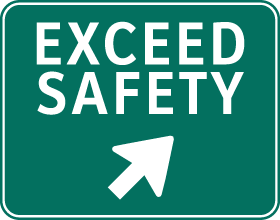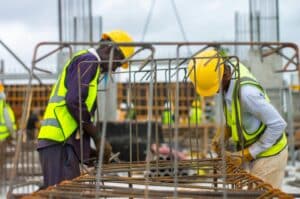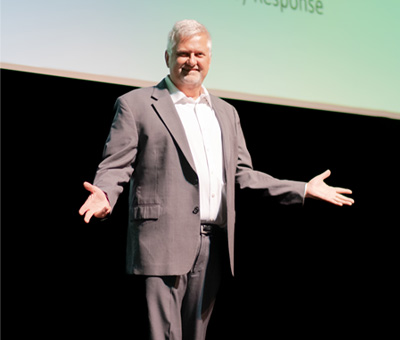The Imperative for Effective Instruction in Complex Fields
In the contemporary workplace, the era of one-size-fits-all instructional paradigms is effectively over. This is particularly the case in complex, high-stakes industries like construction. In such fields, training isn’t a mere formality but a crucial process that ensures not only competency but also safety. A misstep or misunderstanding can result in serious injury or even loss of life, making the stakes exceedingly high.
This article seeks to delve deep into the intricacies of effective instruction, examining not only the methods and tools that have evolved over time but also the human element that remains consistent— the instructor. The aim is to offer a comprehensive perspective on what it takes to create a robust, effective, and adaptable training program that serves the construction industry and has broad applicability in general sectors.
The Historical Context: The Need for a New Paradigm
In the early to mid-20th century, industrial training was primarily manual-driven. Workers would learn their tasks through printed guidelines and direct supervision. Fast forward to the late 1980s, PowerPoint slides became the primary medium for instruction. However, as we moved into the 21st century, it became increasingly clear that these methods were insufficient.
Industries like construction require more than rote learning; they require a deep understanding and practical application of complex principles, ranging from physics to safety regulations. The risks of getting it wrong are not just financial but can be human as well. With increasing technological complexity and a more diverse workforce, the one-size-fits-all model has become obsolete.
Adapting Content and Delivery: Redefining Educational Approaches
Today’s workforce is incredibly diverse, not only in terms of demographic factors like age, ethnicity, and educational background but also in terms of learning styles. According to the Cone of Learning developed by Edgar Dale, the retention rate for different types of educational activities varies widely. For instance, people generally remember only 10% of what they read but as much as 90% of what they do or teach others.
Emerging technologies such as augmented and virtual reality offer unprecedented opportunities to adapt training to individual needs. For example, virtual reality scenarios can simulate the high-risk, high-stakes environment of a construction project, providing workers with a safe space to practice skills and procedures. A 2020 study by Price Waterhouse highlighted that trainees retained over 80% of the material through virtual reality training, compared to much lower retention rates for traditional methods. Moreover, this kind of training can be completed in a fraction of the time, leading to cost savings and quicker deployment of skilled workers.
Time Management in Training: A Paradigm Shift for the Better
The notion that longer training hours automatically yield better results is not just archaic; it’s fundamentally flawed. Extended periods of training can lead to cognitive overload and disengagement, often achieving the opposite of the intended outcome. Training in the construction industry must focus on quality over quantity, incorporating adaptive learning modules that learners can complete at their own pace.
Moreover, an emphasis on outcomes and real-world application of skills provides a more accurate barometer for training effectiveness than mere “seat time.” The introduction of microlearning modules, which break down complex topics into bite-sized, manageable pieces, has revolutionized the way training programs can be structured. These modules can be tailored to suit individual learning pathways, further ensuring that trainees can learn and review material in a way that aligns with their cognitive preferences.
The Role of the Audience: The Underrated Component of Training Success
An effective training program isn’t just about the instructor or the material; it’s also about the audience. Without a comprehensive understanding of who is being trained, even the most skilled instructor and most well-designed course can fall flat. In the era of globalized industries and diverse workforces, the importance of understanding and adapting to different cultural, linguistic, and even generational needs cannot be overstated.
For example, younger generations may prefer digital, interactive learning platforms, while older employees might be more comfortable with traditional lecture-based formats. An instructor’s awareness of these preferences, along with the flexibility to adapt to them, is key for maximizing engagement and retention.

The Instructor as an Objective Facilitator: The Fine Line between Expertise and Neutrality
The role of an instructor isn’t merely to disseminate information but to facilitate a learning experience that is both rigorous and unbiased. This is especially important for industries like construction, where differing methodologies and approaches can lead to varied—and sometimes conflicting—outcomes.
Instructors must strike a delicate balance between showcasing their expertise and remaining objective. This means setting aside personal preferences or ingrained habits to present information in a way that is both comprehensive and neutral, allowing trainees to form their own conclusions based on evidence and best practices. Failure to do so can create an environment where learners are unable to critically engage with the material, undermining the ultimate goal of any training program—real-world application and long-term retention of skills.
Essential Traits of an Effective Instructor: More than Just Subject Matter Expertise
An instructor’s capability is not just determined by their grasp of the subject matter or their teaching skill. Personal attributes like enthusiasm, patience, empathy, and the ability to communicate complex ideas in an accessible manner are often what set great instructors apart from merely competent ones. These soft skills enable the formation of a learning environment where trainees feel encouraged, valued, and understood—key factors in enhancing engagement and facilitating effective learning.
A study by the National Institute for Occupational Safety and Health (NIOSH) identified qualities such as ’empathy’ and ‘mental alertness’ as essential traits for trainers in high-risk environments like construction. These human factors often serve as the “glue” that binds the more technical aspects of a training program, ensuring that it resonates with trainees on a deeply personal level.
Measuring Success: Beyond Conventional Metrics
Traditionally, the success of training programs has been measured through end-of-course tests, feedback forms, and completion rates. While these metrics provide some level of insight into the effectiveness of a program, they don’t offer a complete picture. For industries like construction, where the stakes are high and errors can be catastrophic, a more nuanced approach to evaluation is needed.
Continuous evaluation mechanisms, such as real-world simulations, can better measure the practical application of skills. Peer feedback and mentor evaluations can offer insights into team dynamics and collaborative skill sets, which are often as crucial as technical skills in complex work environments. Post-training interviews and long-term follow-ups can gauge the lasting impact of training, providing data on how well skills and knowledge have been retained and applied in real-world scenarios.
The Future of Training in General Industry: An Ongoing Commitment to Excellence
As we navigate the complexities of the 21st-century workplace, traditional models of training and instruction are increasingly proving inadequate. With technological advancements like augmented reality, AI-based learning platforms, and real-time performance analytics, we have the tools to revolutionize how training is delivered and assessed.
The construction industry, with its unique challenges and high-stakes environment, serves as a microcosm for broader changes needed in vocational training across all sectors and workplaces. As we move forward, it’s imperative to continue evolving our approaches, experimenting with new methodologies, and rigorously evaluating their effectiveness. Only through such a committed, iterative process can we hope to build training programs that are truly fit for purpose.
About the Authors
Tim Neubauer, MS, CSP, is the founder of Exceed Safety. With training experience and content development in the workplace spanning 5 decades, his expertise forms a cornerstone of safety training methodologies.
JoAnn Dankert, CSP, CHMM, CIT, is recognized in the ANSI standard on training and has been a dedicated NSC content creator for several decades. Her contributions in safety standards and instructional design have significantly influenced industry best practices.
Kimberly Kemp, PhD, specializes in Education with a focus on Curriculum and Instruction. A National Board Certified Teacher, she brings 29 years of high school English teaching experience, coupled with 20 years mentoring beginning teachers and imparting knowledge at the college level.
Building Safety from the Start with Prevention Through Design
In workplace safety, the best results come from stopping hazards before they ever reach employees. While training, procedures, and personal protective equipment (PPE) are important, the most effective approach is to design hazards out of the workplace from the beginning. This approach is known as Prevention through Design (PtD). What is Prevention through Design? Prevention…
Continue Reading Building Safety from the Start with Prevention Through Design
Emergency Preparedness: Staying Ready
Whether a misstep causes a fall or a natural disaster causes an evacuation, emergencies happen. Emergency preparedness and response can mean the difference in avoiding an injury or ending with a fatality. Emergencies come with little to no warning. While we may think these are extreme situations that will “never” happen to us, the reality…
Continuous Improvement and Immersive Training in Action
Construction is a dangerous business. Risks are constant, standards shift, and complacency can be deadly. For Jennifer Lastra, a U.S. Navy veteran and current CEO of 360 Immersive, corporate-style training falls far short. True safety begins with continuous improvement, supported by real engagement on the job. Training Should Go Beyond a Click-Through Box “Corporate training…
Continue Reading Continuous Improvement and Immersive Training in Action











